Affiliate marketing is a great way for businesses to generate massive online income and drive sales. Beneficial to both affiliate marketers and businesses, the right affiliate marketing tactics can prove a game-changer for all.
No wonder, the affiliate marketing market in the US reached $8.2 billion in 2022, which was $5.4 billion in 2017.
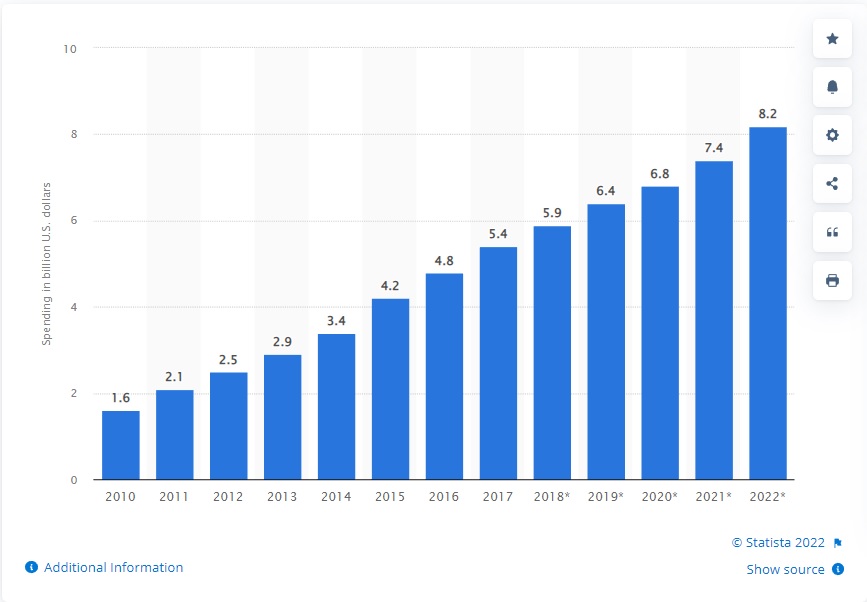
Like paid search, social media, and email marketing, affiliate marketing is being leveraged by many companies around the world for customer acquisition. However, to run a successful affiliate marketing campaign, it is pivotal to create solid affiliate marketing strategies.
A well-planned affiliate marketing strategy helps businesses and affiliates reap the best benefits of affiliate marketing by promoting the right information, engaging customers, and building a loyal community. The image below shows how the affiliate marketing program actually works.
Tracking several critical affiliate marketing KPIs or key performance indicators helps monitor growth of an affiliate program. As a result of these metrics, teams are able to understand whether affiliate campaigns have been successful or unsuccessful.
In this post, we will discuss the top 10 critical affiliate marketing KPIs that you need to track to boost sales.
Top affiliate marketing KPIs to improve sales
Here’s a list of top affiliate marketing KPIs for sales that you must consider.
- Conversion rate
- Sales per affiliate
- Percentage of active affiliates
- Customer Lifetime Value (CLV) of customers from affiliate programs
- Average order value
- Cost per affiliate sale / Cost per lead
- Overall engagement
- Rate of return/rate of cancellation
- Revenue
- Growth year-on-year
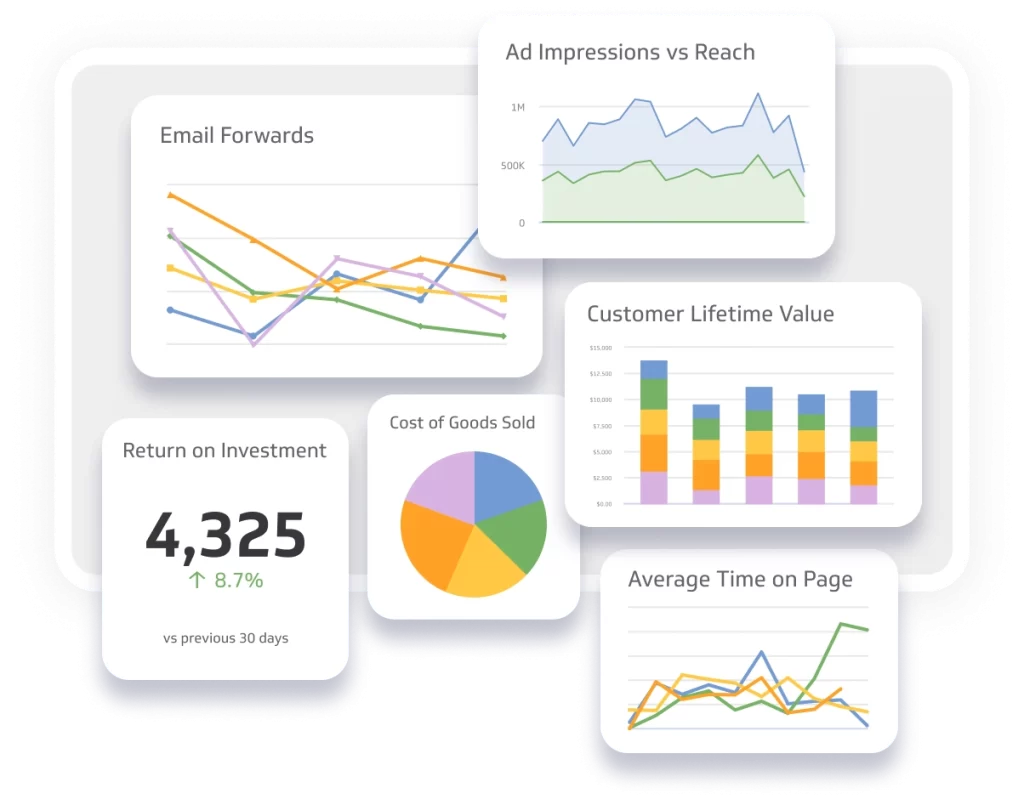
There are many things about your affiliate marketing program that can be determined by these KPIs, including:
- Affiliate performance and how well the affiliate program is doing.
- Whether the program contributes to achieving the business’s sales targets.
- Growth opportunities for scaling the business.
To ensure qualitative results, choosing the right KPIs for affiliate marketing metrics is crucial. Analyze these common KPIs with your sales operation team and discuss how these key metrics can help you reach your sales goals in no time.
Sales operations: What does it comprise?
So, what is sales operations and how does the sales operations team contribute to sales growth?
By managing the research and administrative tasks of the sales process, the sales operations team focuses on helping the customer-facing sales team close deals faster. They do so by undertaking a variety of functions, such as sales strategy, sales process optimization, forecasting, employee training, and talent acquisition.
Sales operations form the backbone of the entire sales team because they are responsible for many critical and complex responsibilities. Hence, forming the right team is essential to ensure success in sales.
The sales operations team consists of the following roles:
- VP of Sales Operations – This is vital to the development and effectiveness of any sales department. The VP of sales operations is responsible for the overall productivity and effectiveness of the entire sales team. The responsibilities include sales process planning, optimization, sales training, and recruiting talent for the sales team.
- Sales Operations Manager – The sales operations manager is responsible for overseeing a smooth and effective sales process while ensuring the entire team works productively for achieving business goals. The responsibilities include implementing a sales strategy, setting goals for the sales team, interviewing and training sales representatives, and monitoring the sales team’s performance.
- Sales Operations Analyst – As the name suggests, the sales operations analyst is responsible for organizing and evaluating sales data to provide support to the sales team in areas of market research, customer insights, sales reports, and more. Besides, the sales operations analyst leverages the data analysis findings to streamline the sales functions.
- Sales Operations Specialist – The sales operations specialist is responsible for ensuring streamlined and efficient sales operations in a company. The duties include gathering and organizing sales data, generating customer insights, creating forecasts about upcoming sales, designing sales incentives, and more.
- Sales Operations Representative – The sales operations representative is responsible for supporting the sales operations manager in generating reports, managing administrative tasks, implementing sales automation, and more. This professional also acts as a liaison between the sales representatives and the sales managers to ensure that critical sales information and other details are communicated effectively.
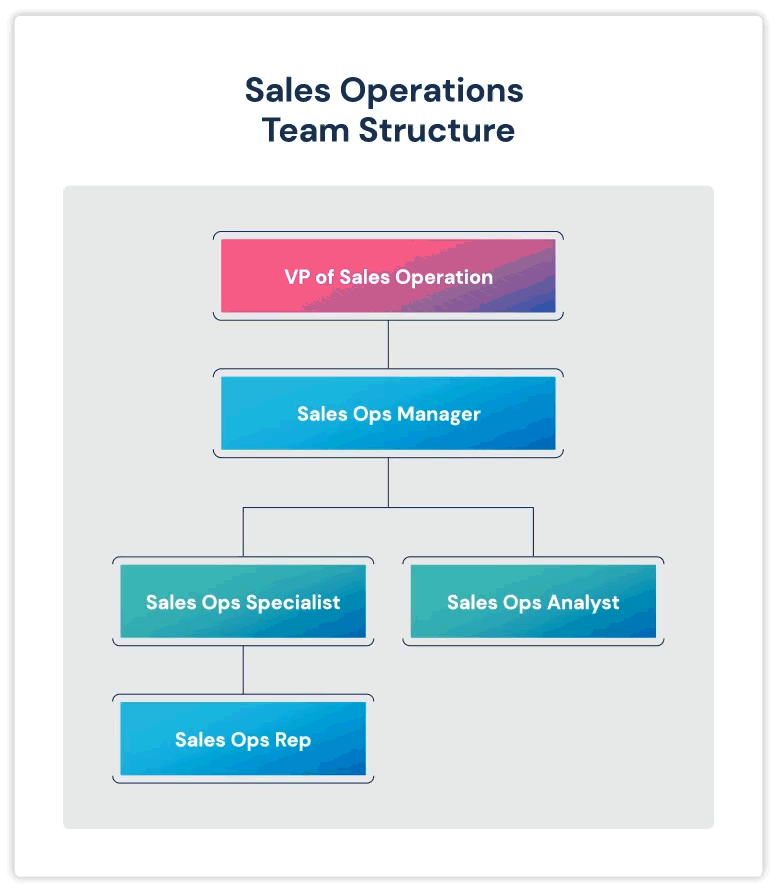
Affiliate marketing is one of the widely-used sales strategies that most sales operations teams invest in for achieving sales goals. Let us understand how affiliate marketing boosts sales.
How affiliate marketing programs impact sales
Affiliate marketing offers profitable sales channels for businesses. And with the right affiliate program software provides the ability to bring in additional traffic, qualified leads, and increased conversions. Here are some of the ways affiliate marketing is proving to be a boon for businesses.
- The setting up of an effective affiliate program does not require heavy capital investment. Set goals for the program and promote the same across various marketing mediums to attract affiliates. Your affiliate member network takes care of promotions and advertising for you, thereby bringing in extensive traffic and leads.
- Affiliate marketing aims at improving your brand awareness and is an influential medium to grow sales.
- The affiliates work round the clock to promote your products in their networks through multiple promotional sources.
- Since affiliate marketing is a commission-based program, you do not have to shell out an additional budget for advertising your products. However, you do need to provide attractive compensation to keep the affiliates motivated.
Now, let’s get started with the affiliate marketing KPIs.
Top affiliate marketing KPIs
1. Conversion rate
The conversion rate records the percentage of visitors who have converted into customers successfully by taking the desired action. It can include signing up for a free trial or subscribing to a premium plan. Each goal will have a unique conversion rate depending on the conversion goals you set.
Calculate conversion rates by dividing the total number of conversions by the total number of visitors. For instance, if you created a social media ad on Facebook that reached an audience of 10000 people and the ad received about 300 clicks, then the overall conversion rate would be calculated as follows:
300/10000 = 0.03 or 3% conversion rate.
Why is it crucial
Conversion rates are a great way to uncover the most effective affiliate marketing channels. Here are a few ways how conversion rate helps you in setting up the best affiliate marketing program.
- It helps in evaluating and comparing the performance of affiliate marketing campaigns across various advertising channels.
- It assists in setting ROI expectations for scaling affiliate marketing programs.
- It helps in identifying valuable customers amidst the extensive customer database and aids in crafting personalized campaigns for better targeting and optimizations.
Conversion rates have a significant impact on the bottom line as it helps in fine-tuning the affiliate marketing effort.
2. Sales per affiliate
As the name suggests, the sales per affiliate KPI is the measure of the number of sales done by an affiliate marketer. In simple words, it’s the number of customers an individual affiliate brings to your business.
Sales per affiliate play a significant role in measuring customer acquisition as every customer that the affiliate brings in contributes to the conversion of the goals of your affiliate marketing strategy.
Why is it crucial
Sales per affiliate is an important KPI for affiliate marketing for the following reasons.
- Tracking this metric helps in identifying the affiliates that drive the highest number of conversions.
- It offers an excellent way to set goals and targets for the entire affiliate marketing program.
- By keeping a close eye on the top performers, you can design an excellent rewards program to boost the performance of the affiliates.
- For instance, if an affiliate makes a sale of 100 premium product subscriptions in a month, you can identify their efforts and reward them with extra commissions, bonuses, or training to motivate them.
- It helps in monitoring the performance of the affiliates so that you can provide them with resources to grow the affiliate sales.
- Pay per sale is one of the most sought after commission styles for most affiliates.
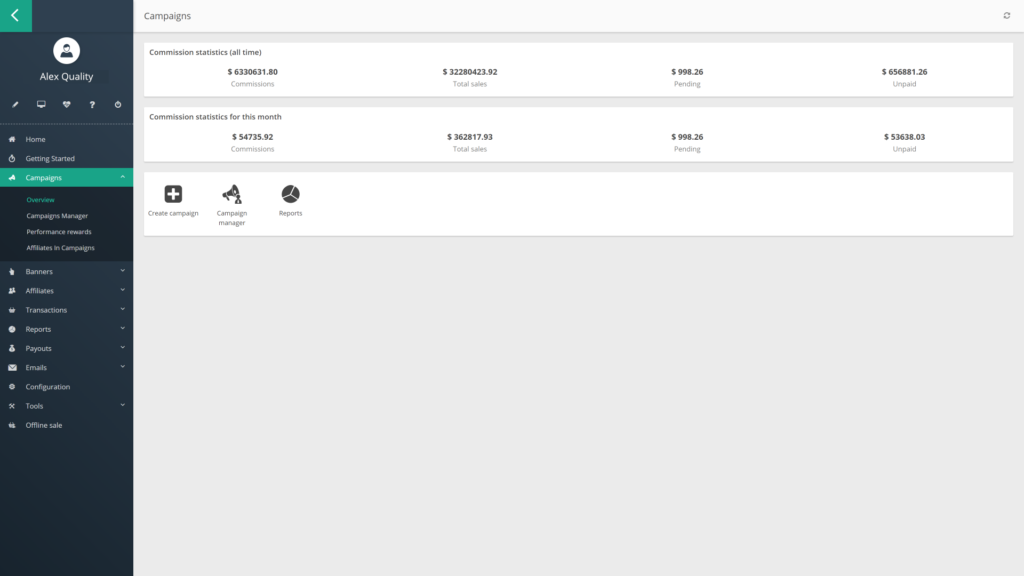
3. Percentage of active affiliates
Although you have a significant number of affiliates registered in your program, the number of affiliates who are actively working for promotions may vary. Hence, tracking the number of active affiliate members is crucial for the success of affiliate programs.
The percentage of active affiliates is the number of affiliates who are putting in effort for generating sales or leads for your business. By dividing the number of active affiliates by the total number of affiliates, you can determine the active affiliate rate.
For example, if you have 1000 affiliates and only 125 are actively engaging to refer customers, then the percentage of active affiliates will be:
125/1000 = 0.125 = 12.5%
Why is it crucial
Here are a few ways why the percentage of active affiliates KPI is helpful for your affiliate campaigns.
- It gives you an overall idea about the performance of the affiliate program. Further, it helps you craft an engaging affiliate program with the right amount of promotional resources, proper affiliate onboarding, and more to ensure its success.
- It helps you identify the affiliates who are contributing to your program in a meaningful way.
- It gives the best insights into the number of active affiliate members, thereby helping you draft a good rewards solution for the affiliate program.
4. Customer lifetime value (CLV) of customers from affiliate programs
Customer lifetime value (CLV) is the total value a typical customer is expected to bring into your business, minus the amount of money you have spent on acquiring the customer.
CLV is one of the best metrics to monitor customer acquisition cost and foresee the future profitability of a business. Customer Lifetime Value is calculated as follows:
Customer Lifetime Value = Average Transaction Size x Number of Transactions x Retention Period
For example, a SaaS company offering multiple pricing plans has typical customers who spend $20 per month. Considering these customers subscribe for two years, their total lifetime value would be:
CLV = Subscription cost * Number of payments in a year * Duration of subscription = $20 * 12 * 2 = $480

Why is it crucial
It contributes significantly toward organic business growth. Here are a few reasons why CLV is an important KPI of an affiliate marketing program.
- CLV has a direct impact on a business’s profit margin. It defines how much budget you can allot to acquire new customers.
- Customer retention ensures a steady or recurring cash flow to your business that can be reinvested for scaling your ventures.
- It assesses the type of affiliate activities that are attracting high-value customers.
- Measuring CLV helps you with affiliate program monitoring. It helps in tracking the affiliate team performance in fetching loyal customers.
- It helps you identify the top-performing affiliates and figure out the best rewards for their efforts.
5. Average order value (AOV)
Average order value is the average amount spent by the customer every time they buy something from your business. It helps you keep a track of customer behavior by giving intelligent insights into repeat orders, best-selling products, and worst-selling products while highlighting the efficiency of the affiliate program members.
Average order value is calculated by dividing the revenue generated by the number of sales. For example, if the total revenue for September was $50000 and the total number of sales generated by the affiliate program was 1225, then the AOV during September was $40.81.

Why is it crucial
Average order value must matter for businesses because:
- You can gain direct insight into customer behavior and how they spend their money.
- As AOV directly impacts business revenue growth, it contributes greatly to structuring product pricing and marketing strategies.
- By giving you insights into the top-selling products, AOV helps you craft or revamp your affiliate marketing strategy for attracting high-value customers.
- It helps you with setting attractive commission structures and other rewards for affiliates.
6. Cost per affiliate sale/cost per lead
Cost per affiliate sale or cost per lead is the amount of money spent on affiliate sales. It is the average cost per acquisition.
For example, a SaaS company offering a software solution to B2B customers can leverage an affiliate marketing program to tap into larger audiences. As the company would be paying affiliate commissions for qualified leads, monitoring and measuring the cost per lead would be ideal for sales success.
Why is it crucial
Measuring the amount of money you spend on securing a sale through an affiliate program helps you gauge whether you are putting the right efforts into affiliate marketing. You can also compare these costs with that of other marketing platforms to determine the ones that work the best for your business.
7. Overall engagement
Assessing the engagement affiliates receive on their promotional posts reflects how trusting their following is and how influential they are in influencing their audience. By assessing the quality of affiliate traffic on their websites, posts, and social media channels, you can understand whether they drive high-value customers to your business.
Affiliate engagement comprises the number of visits your website receives through affiliate links, the number of referrals, and conversions. For an affiliate program to succeed, the affiliates must take a genuine interest in promoting the products or services.

Why is it crucial
Monitoring customer engagement with your affiliates gives you intelligent insights into streamlining your affiliate marketing efforts. For example, by understanding how they manage the promotion of your products, you can prepare a library of promotional assets, such as promotional banners, infographics, ebooks, videos, and more.
Besides, you can create internal documentation to provide the affiliate partners with the necessary information about the products, such as feature updates, product roadmap, and other details. This documentation could also contain resources about affiliate marketing best practices, affiliate program policies, and more that affiliates can refer to when they need to understand the program details.
The engagement metrics help in monitoring brand awareness and incoming traffic to your website.
8. Rate of return/rate of cancellation
The rate of return or rate of cancellation is the percentage of purchases through affiliate links that are returned or canceled.
The reasons for the cancellations or returns could vary depending on the type of business and industry they belong to. For example, the average customer might cancel their SaaS subscriptions if the product doesn’t match their requirements.
Similarly, customers buying from businesses might return the products they buy because of quality issues, delays in eCommerce order fulfillment, customer service, bad returns policies, failed payment attempts, and more.
Why is it crucial
Measuring the rate of return or rate of cancellation helps you analyze the performance of the affiliate marketing campaigns. It helps businesses identify if affiliates are promoting the products to the right audience or not.
9. Revenue
This is one of the most important KPIs for tracking the performance of affiliate marketing campaigns. Observing the metrics, such as affiliate link clicks, traffic, engagement, cost per lead, and more without understanding how it affects the business revenue will result in ill-performing campaigns. Hence, monitoring affiliate revenue besides click-through rate and views is essential.
For example, an affiliate marketer that focuses on promoting product reviews or doing product comparisons will receive more clicks when compared to the ones who are simply sharing posts related to the products. Therefore, affiliate marketers must plan their strategy to reach out to larger audiences and increase revenue. This will also impact their affiliate commissions and help them earn a handsome amount.
Why is it crucial
Here are a few reasons why measuring revenue helps in streamlining affiliate marketing campaigns.
- Affiliate revenue presents deep insights into the performance of the campaigns, thereby telling you how it is affecting revenue growth.
- It helps in calculating the overall revenue growth generated through the affiliate campaigns at any point in time.
- You can identify the most profitable areas or top-performing affiliates to recognize the strengths and weaknesses of the entire campaign. It also helps in identifying the affiliates who might require additional training and other resources.
- The revenue helps you decide on the best affiliate marketing budget to give away adequate compensation to the affiliates for their efforts.
10. Growth year-over-year
To yield the best results, it is ideal to run affiliate marketing campaigns for at least a few years. Hence, tracking its growth every year is an important affiliate marketing KPI.
Growth year-over-year is a critical metric that every marketing team must track to monitor the growth of affiliate marketing campaigns. It compares the affiliate results over many years and helps businesses understand its performance.
Why is it crucial
Monitoring growth year-over-year helps businesses in the following ways.
- It helps businesses understand how sales can fluctuate over the years. The holiday season might be a time for businesses offering gift items to make more sales than the rest of the year. This insight will help in crafting smart marketing strategies to ensure increased sales.
- It tracks product demand over the years and makes predictions about future sales and affiliate revenue.
- It throws light on how your affiliates are growing and expanding their reach to convert more customers. If the numbers of the affiliates are becoming stagnant year over year, this metric helps you identify it in the initial stages and you can then revamp your strategies.
- This metric can also be used to compare the growth rate of the affiliates with one another and identify the top performers. You can giveaway good rewards to the best-performing affiliates.
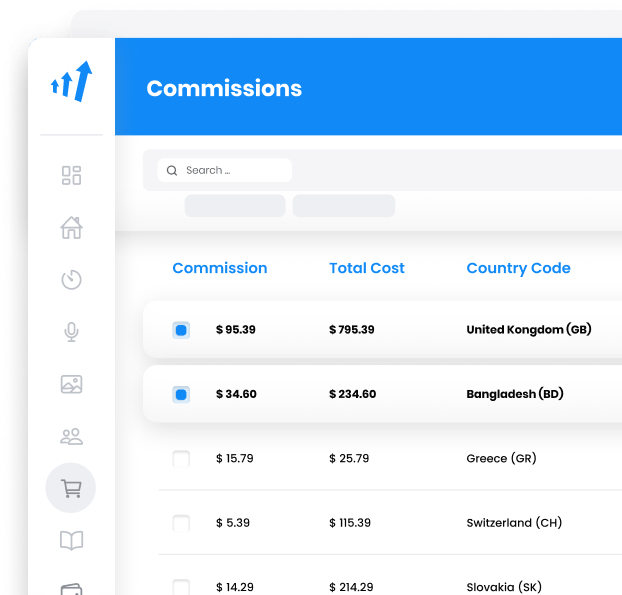
Key takeaways
Monitoring the right affiliate marketing KPIs keeps you updated about the performance of the affiliate marketing campaigns. With the help of this numerical data, you can focus your affiliate marketing campaign effort in the right direction and boost your affiliate program success and business sales.
Post Affiliate Pro offers amazing affiliate program software that helps businesses plan, manage, and monitor their affiliate marketing program without any hassles. It helps businesses set up multiple affiliate programs, track the affiliate members’ performance, and send their payments from a unified dashboard.
If you are looking for an all-in-one software to kickstart your affiliate marketing efforts, Post Affiliate Pro is the best platform for you. Sign up for a free trial today!
6 reasons to use a third-party affiliate management system
An affiliate management system can help companies improve their affiliate marketing programs by tracking metrics, detecting fraud cases, eliminating the need for hiring an accountant, providing user-friendly solutions, and simplifying the process of building an affiliate network.
Partnerize provides a partnership management solution for marketers, offering a CPA affiliate program for earning extra income through media and marketing. They have specific campaign rules and accept various traffic sources, with a 30-day cookie duration. The program has single-tier commissions and a minimum payout, with options for ACH bank transfers, PayPal, and wire transfer.
7 Reasons Why Affiliates Aren’t Promoting Your Online Store [And How to Fix Them]
To improve affiliate marketing results, provide support and resources, offer discounts and giveaways, track affiliate performance, ensure affiliates understand and like your products, and offer competitive commission rates.




